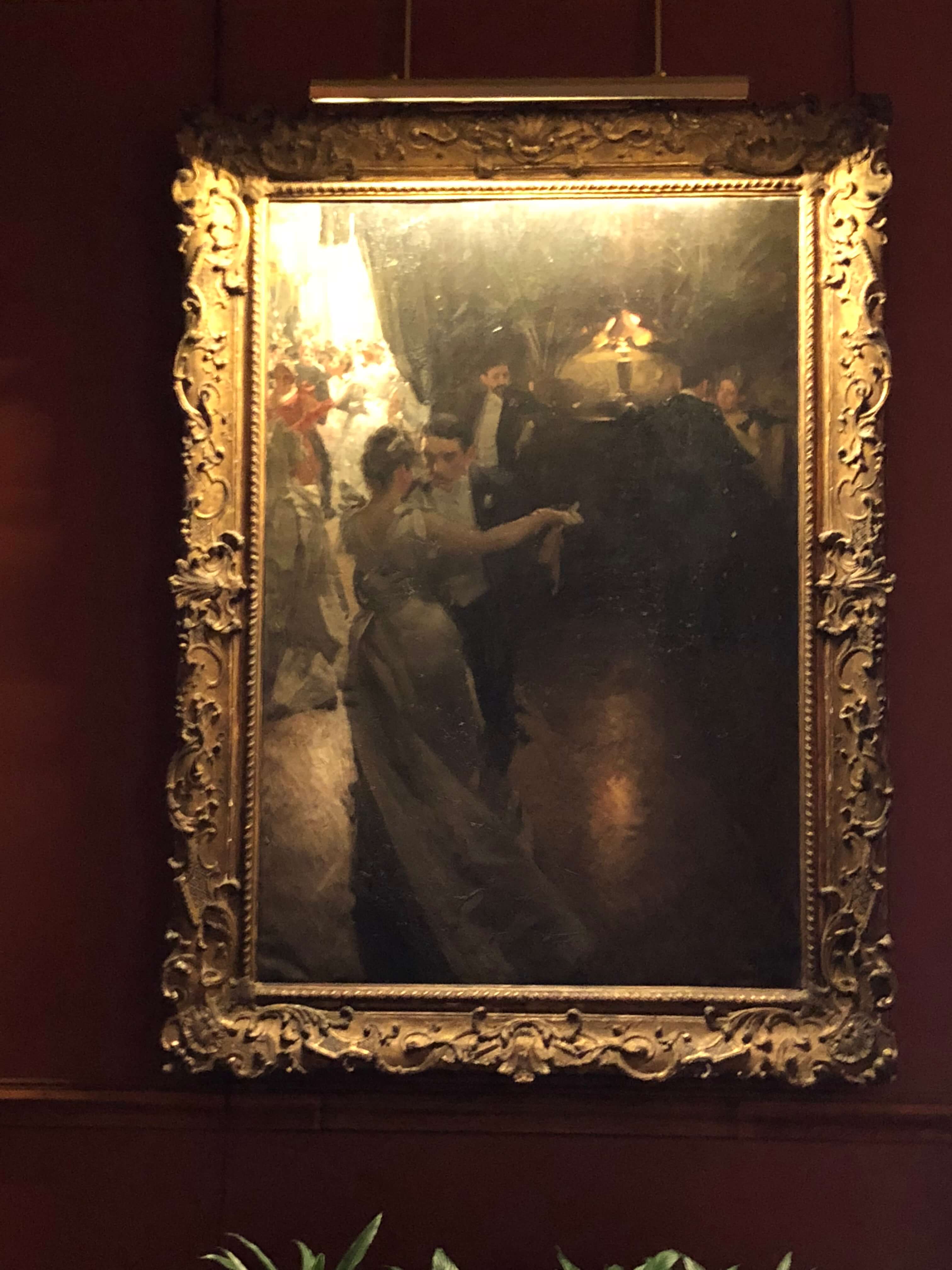Yesterday, I published a long post about my visit to Biltmore in Asheville, North Carolina. Today, I wanted to talk in more detail about one aspect of the estate – its art.
Unlike his father, George Vanderbilt wasn’t a big art collector. He collected prints, but beyond that, he generally preferred to spend his money on his home and lands rather than paintings and sculptures. However, he still managed to acquire quite a few notable works of art that are now on display at Biltmore.
Italian artist Giovanni Boldini’s portrait of Edith Vanderbilt enjoys a prominent place in the Tapestry Gallery. It’s one of the few paintings that visitors can get close to. Boldini is one of those artists whose style is always immediately recognizable, and I think this painting is pretty fabulous.

Biltmore owns six portraits by John Singer Sargent. One is of George Vanderbilt himself. One is of his mother, Maria. Two depict Biltmore’s masterminds, architect Richard Morris Hunt and landscape architect Frederick Law Olmsted. The other two are of female Vanderbilt relatives. The portraits of Hunt and Olmsted, with hand in the second floor living hall, are my favorites. I particularly love Olmsted, who is shown in the outdoor environment he created. He was old and in poor health by the time this painting was made, but I think that Sargent gave him a great sense of dignity despite his obvious frailty. Hunt looks much more commanding in his architectural setting, though he was also ill and near the end of his life when Sargent painted him. The docents and audio guide mentioned the respect that Vanderbilt must have had for these two men in order to commission such a significant artist to paint their portraits. I agree that this is extraordinary. As for the other Sargent portraits, George’s is quite nice, and Maria’s is difficult to see, but the other two aren’t my favorite examples of the artist’s work.
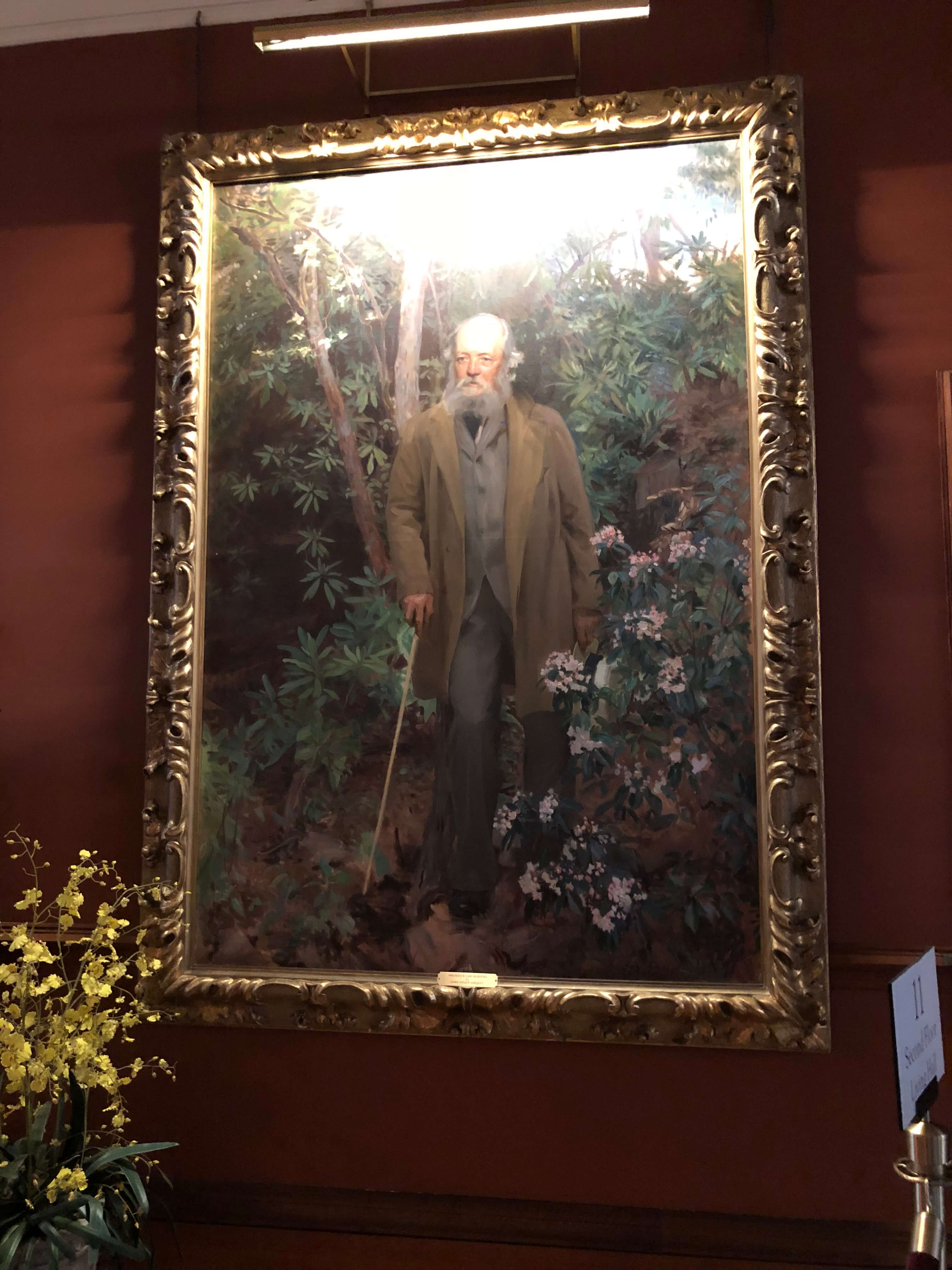
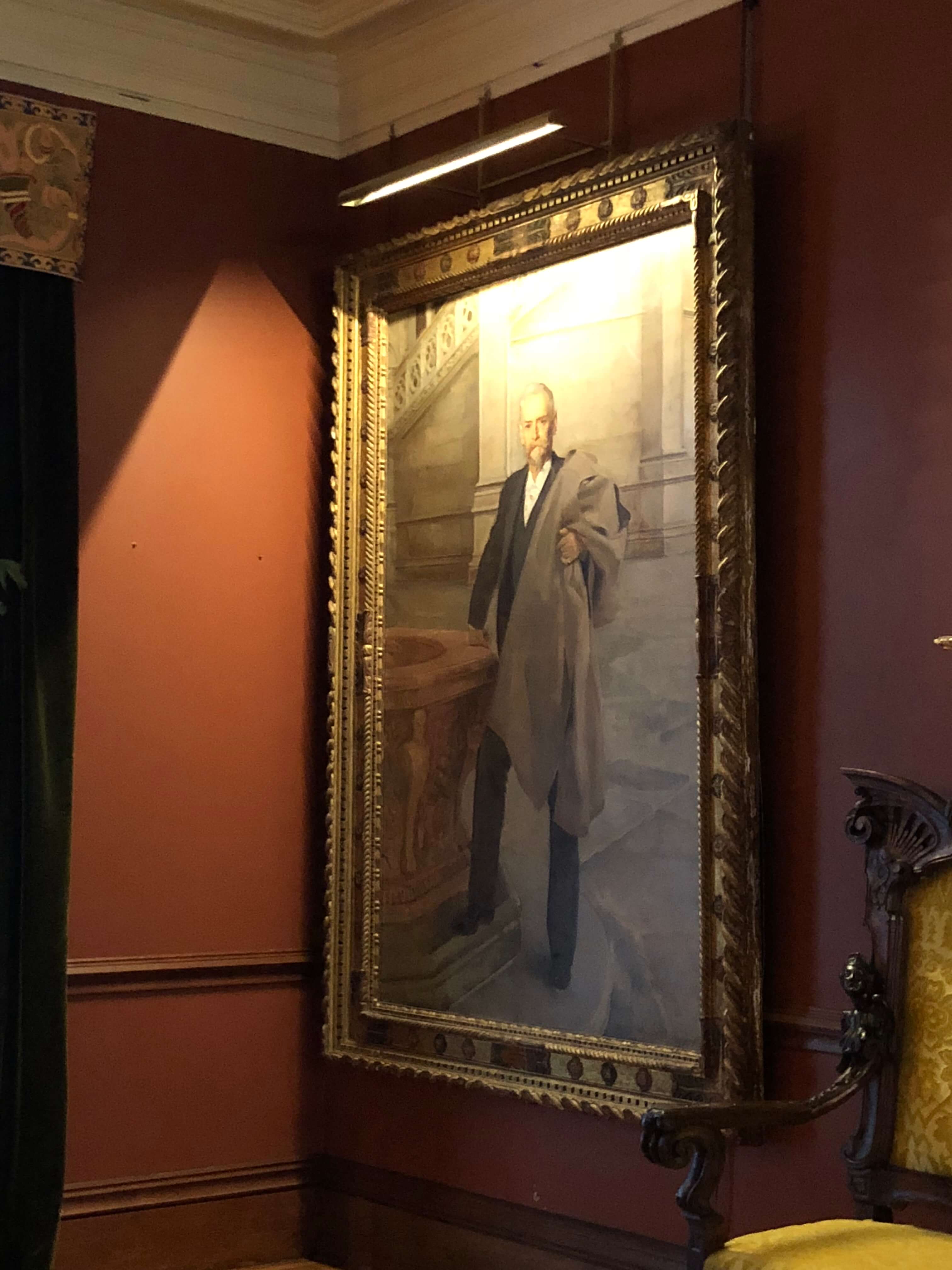
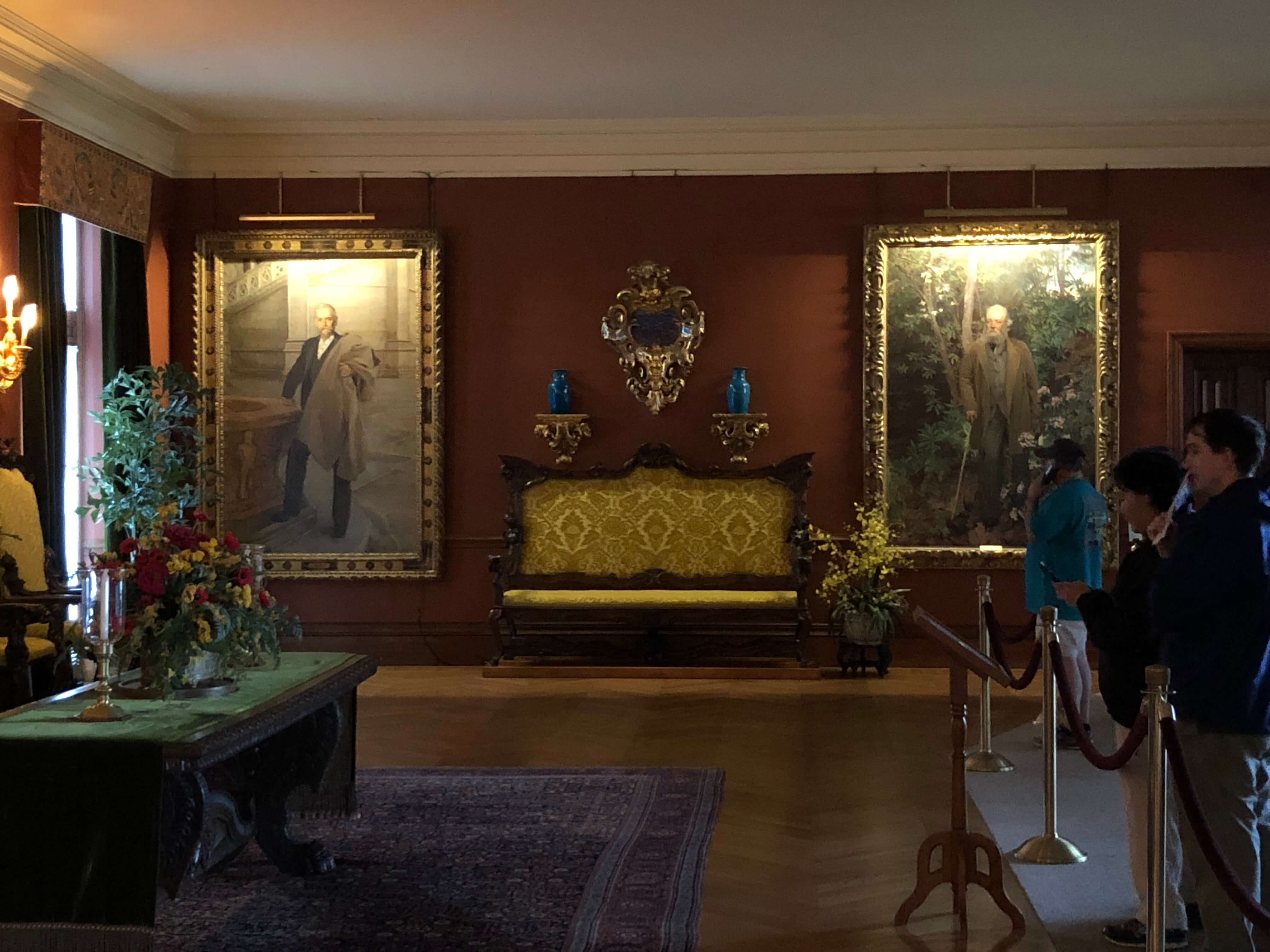
The breakfast room contains two paintings by Renoir, Young Algerian Girl and Child with an Orange. Unfortunately, they’re nearly impossible to enjoy, since the Breakfast Room is quite dark, and visitors can’t get anywhere near the paintings. But even with these disadvantages, there’s no mistaking them for anything but Renoirs.
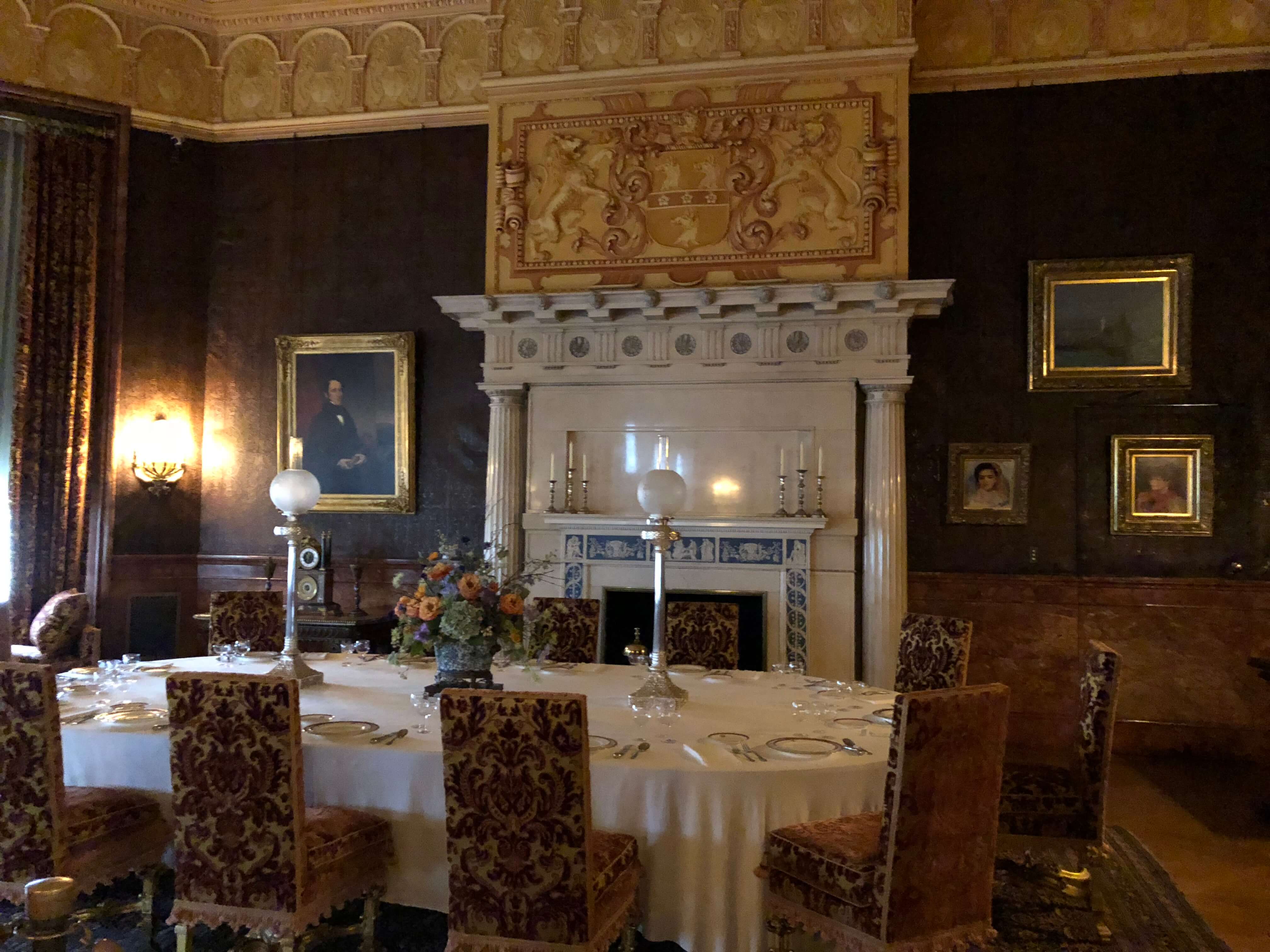
George Vanderbilt loved prints, and he started collecting them as a boy. He hung scores of prints all over the house. They even line the hallways. George put prints in all Biltmore’s (many) guest bedrooms, and he curated each room’s selection around particular artists or themes that gave these rooms their names. The prints seem to heavily favor European Renaissance and Baroque, though I did spot some later works as well.
George particularly loved Durer. I remember hearing that he once had a massive collection of prints by Durer, but he sold them to help finance Biltmore’s upkeep. One thing he obviously kept was this large Durer over the fireplace in the music room. The music room wasn’t completed in George’s lifetime, but one of his grandsons found this piece in storage and used it when he finally finished the room in the 1970s. Durer’s distinctive monogram and his dates are carved into the fireplace below.
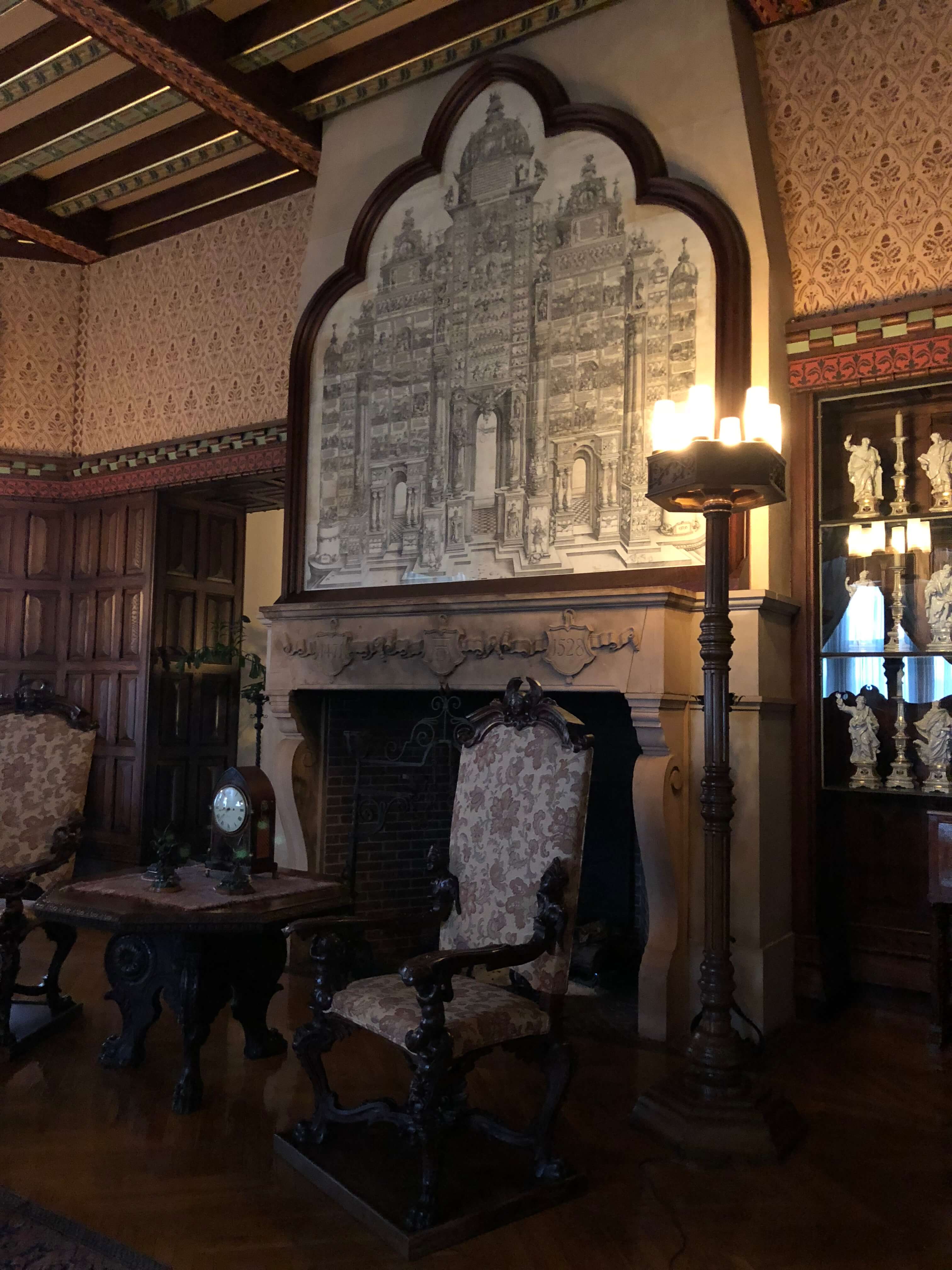
There is no stained glass in the actual Biltmore house. This might seem surprising given its heavy medieval flavor, but it’s probably pretty accurate to the house’s French chateau style. (In the Middle Ages, stained glass tended to be for public rather than private buildings.) This window was created by John La Farge for George’s parents to display in their Fifth Avenue NYC home. George had it brought to Biltmore when he inherited the city house. It’s now located inside the Biltmore Winery store, where you can get very close to it and view it in great detail. That’s fortunate, since La Farge’s work is best appreciated up close.
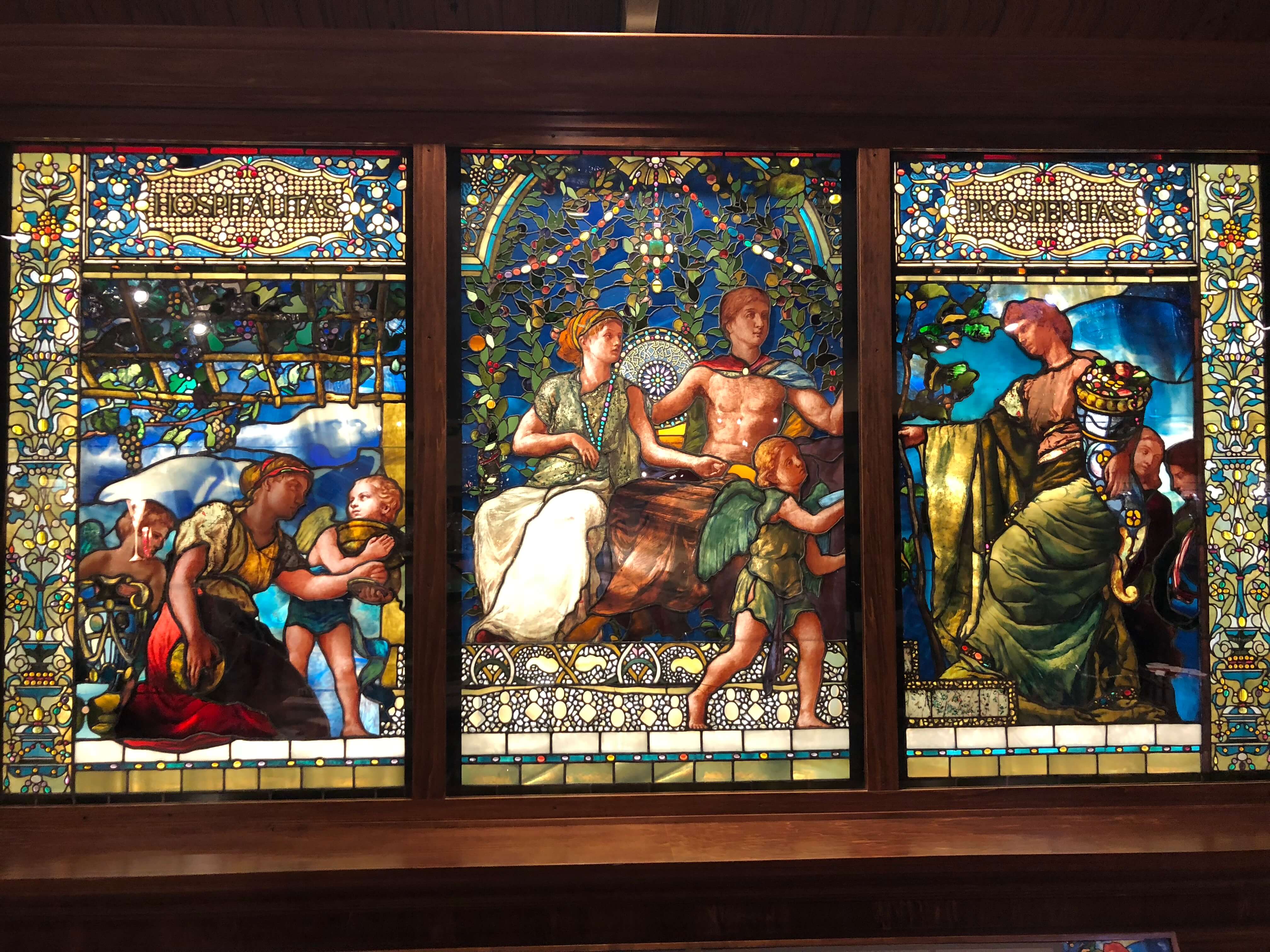
In the library, there’s a series of busts depicting French writers and thinkers. A docent told me that Moliere, Cardinal Richelieu, Cardinal Mazarin, and Jean Racine are among the men portrayed.
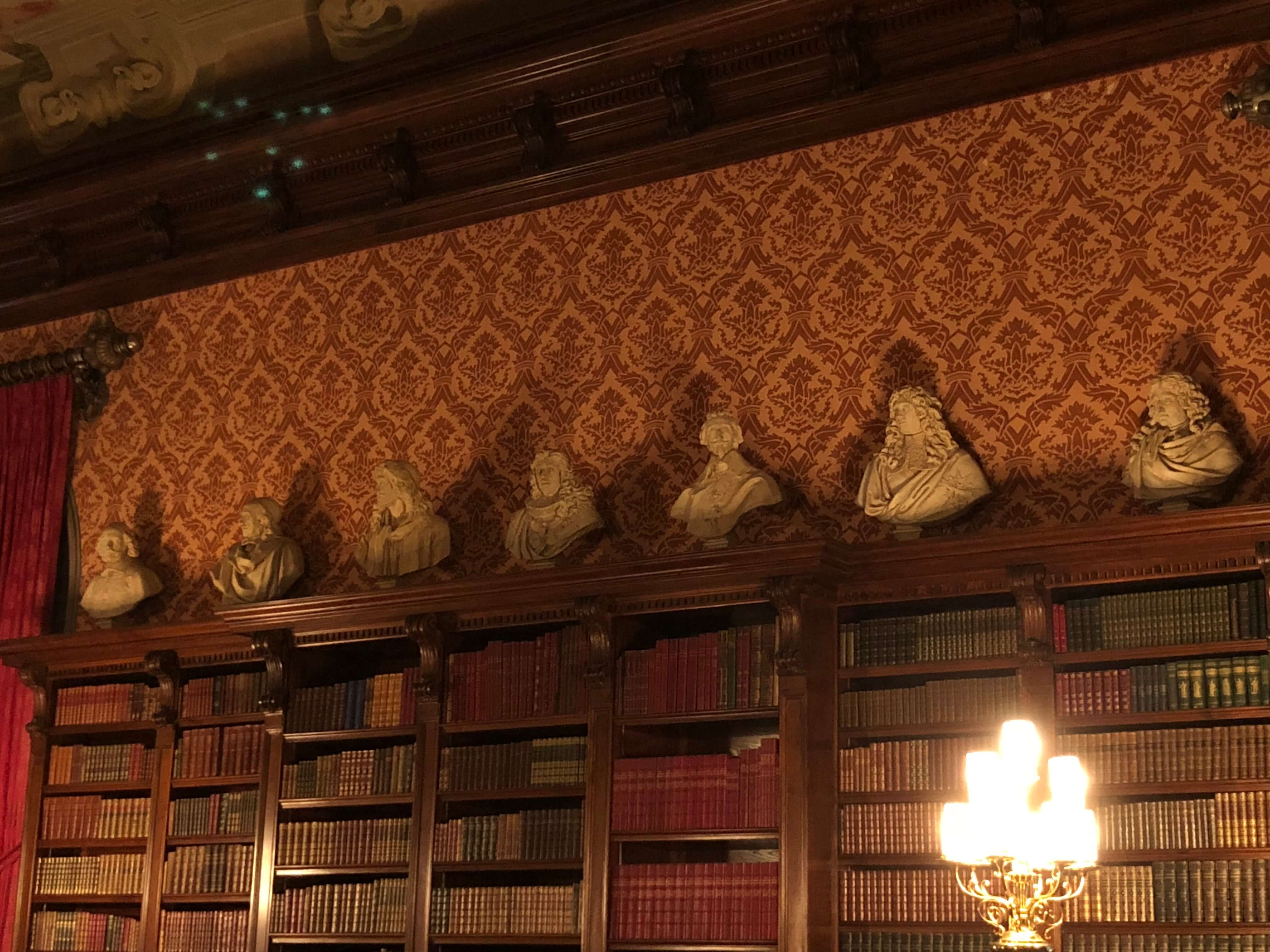
Austrian-born sculptor Karl Bitter designed many of the sculptures at Biltmore House. These include the monumental statues of French saints Joan of Arc and Saint Louis that can be found on the façade. Bitter’s plaster casts of these two figures are installed in the Banquet Hall. Bitter also designed Boy Stealing Geese, which is the centerpiece of the Winter Garden, and the two friezes in the Banquet Hall.
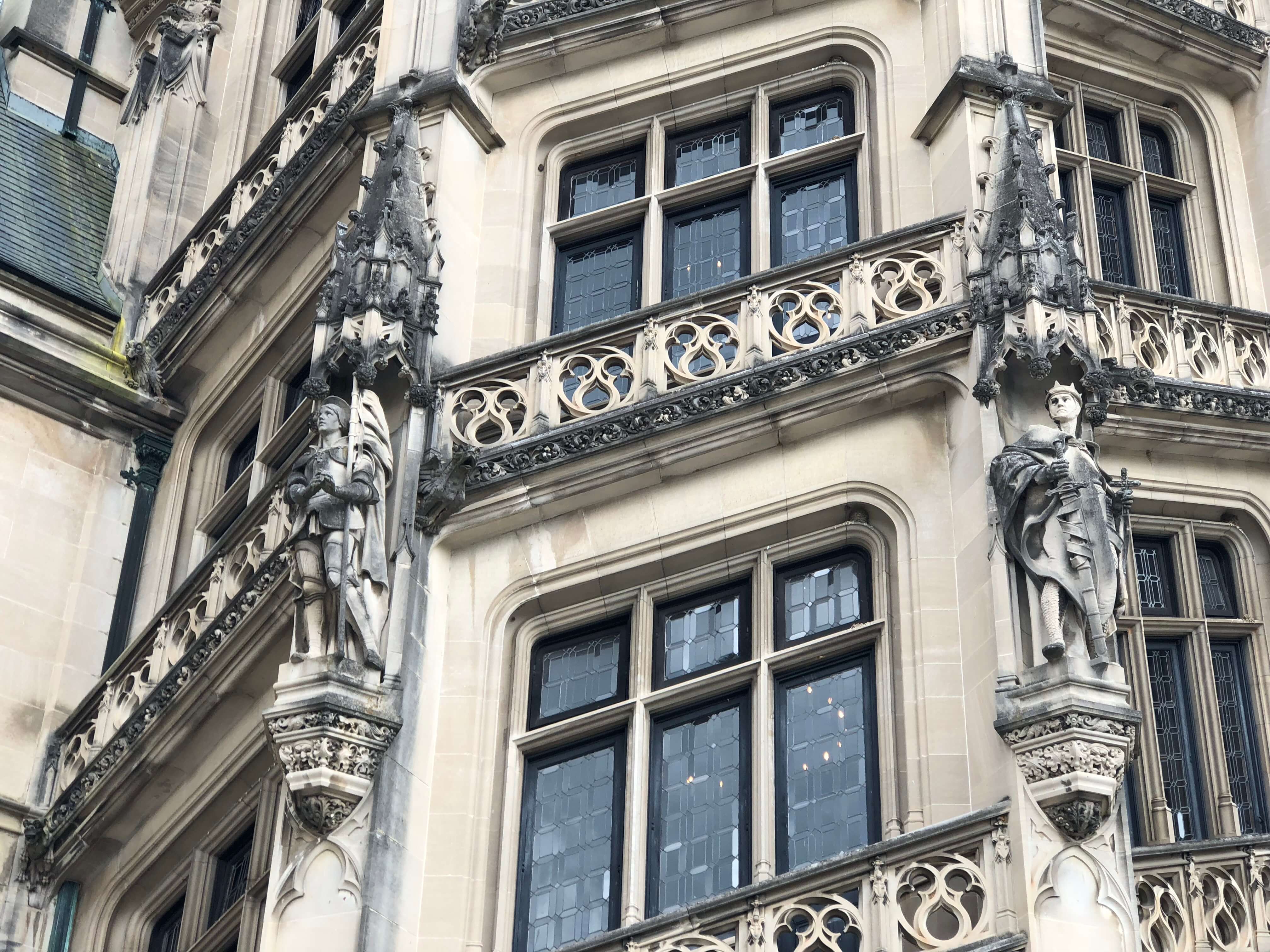
In keeping with its chateau theme, the Biltmore owns a lot of 16th century Flemish tapestries. They are displayed in the Tapestry Gallery, as the name suggests, and also in the Banquet Hall. There are lots of scenes and details on the tapestries. I think you can probably look at them for hours and still find new things you haven’t noticed before.
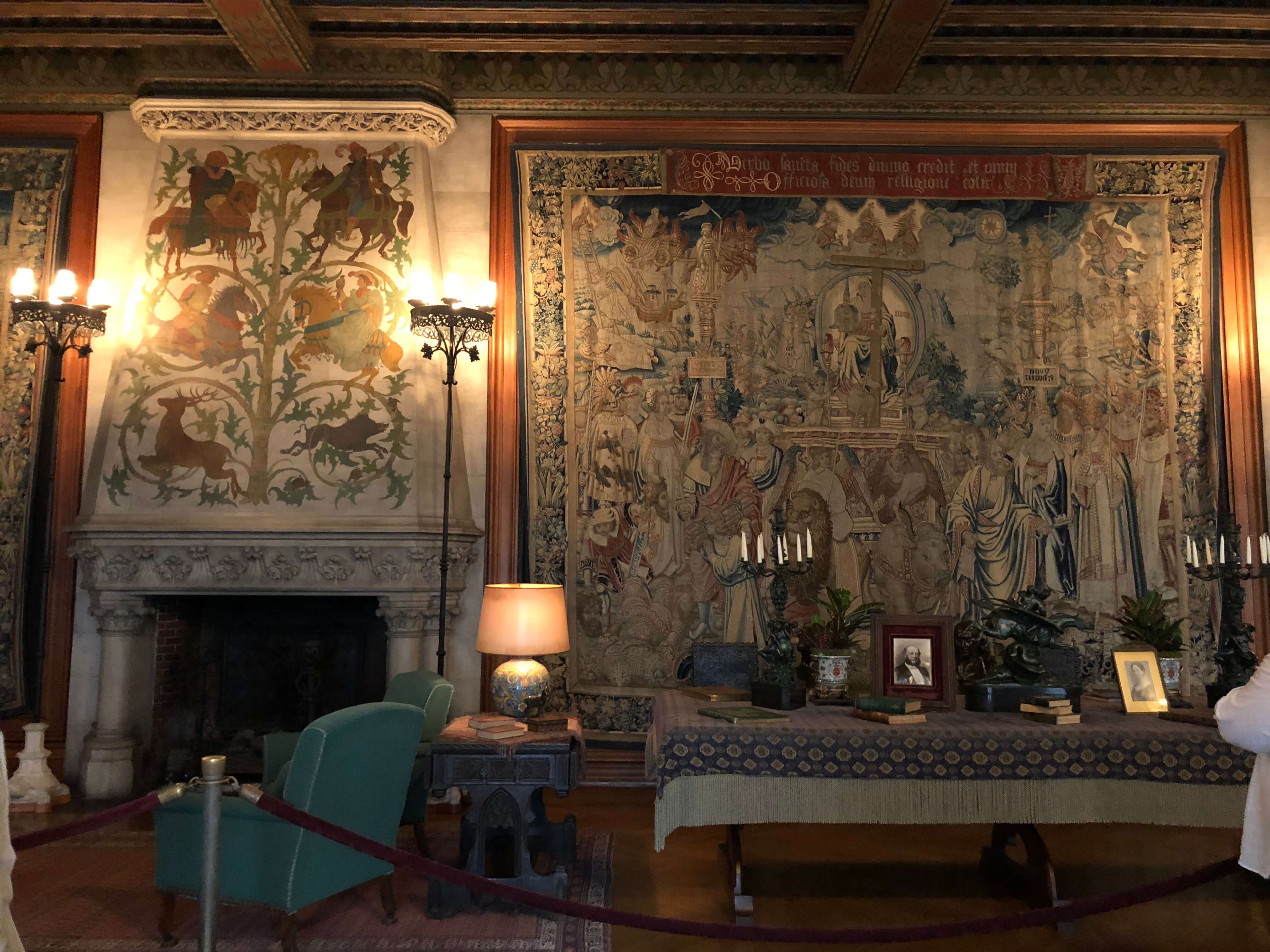
The library has a beautiful painted ceiling entitled The Chariot of Aurora. The ceiling was painted by Italian artist Giovanni Pellegrini, and it was originally in the Pisani Palace in Venice. George Vanderbilt bought the massive canvas in a sale of the palace’s contents. (The Pisani Palace seems to now be a fancy hotel.) The painting is beautiful and makes this room so special, but unfortunately, it can be difficult to fully appreciate from the small area of the room that visitors are allowed to walk in. I love the illusionistic architectural elements around the perimeter of the canvas.
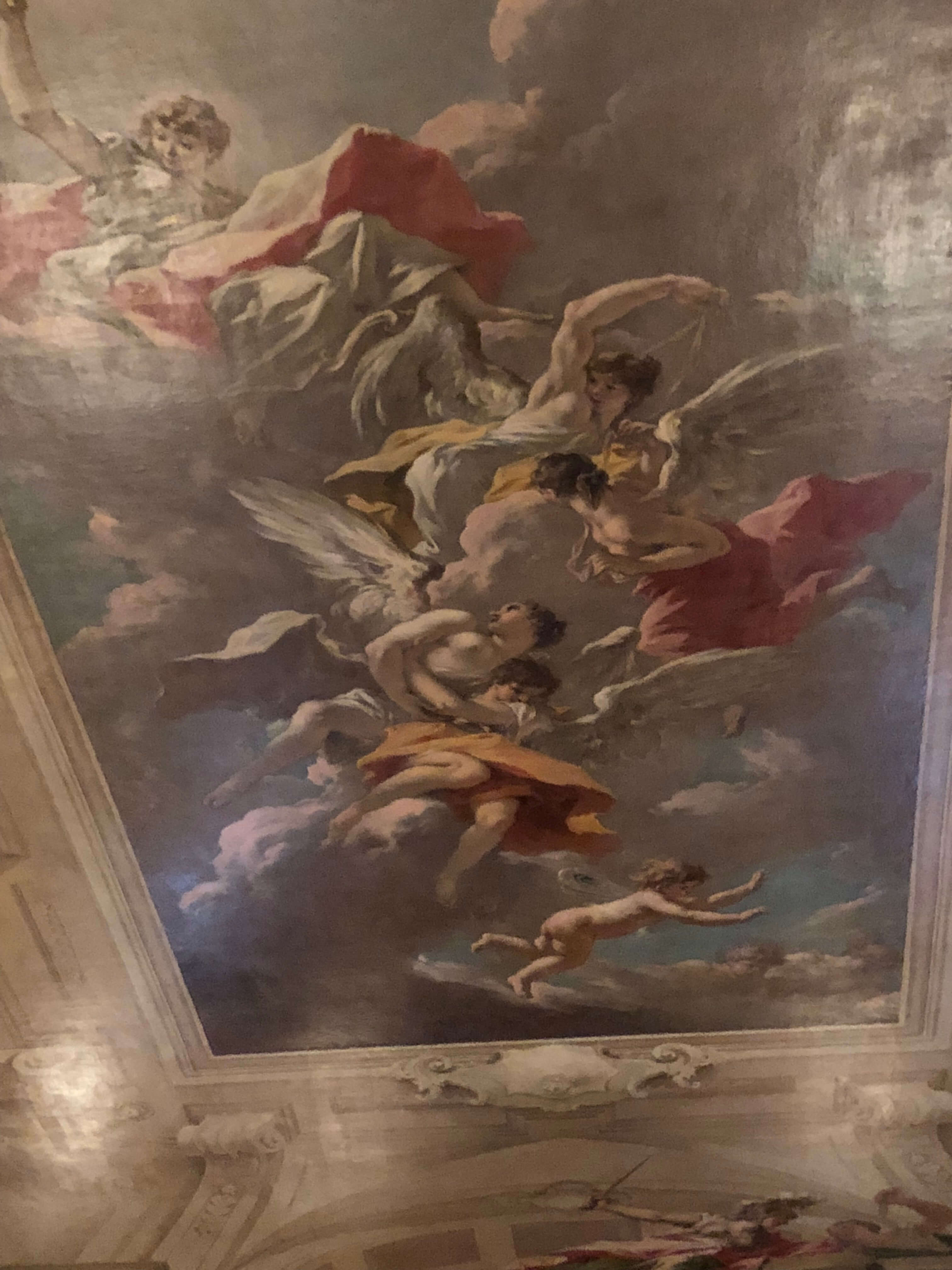
There are two Vanderbilt family portraits at Biltmore. One is from the 19th century and includes George as a child. The other is from the 1990s, showing George’s descendants sitting near the older family portrait.
During my Evening Premium Tour, I saw a really captivating painting hanging in one of the upstairs halls. It’s called Rosita, by Spanish artist Ignacio Zuloaga. The tour guide said that it was the last painting that George Vanderbilt ever purchased. Rosita was painted in 1913; George purchased it in early 1914, but he died before it was delivered. Unfortunately, I didn’t get a picture of Rosita, but you can see her here on Biltmore’s blog.
This unusual portrait of Edith Vanderbilt by James Abbott McNeill Whistler can be found near the entrance to the Tapestry Gallery.
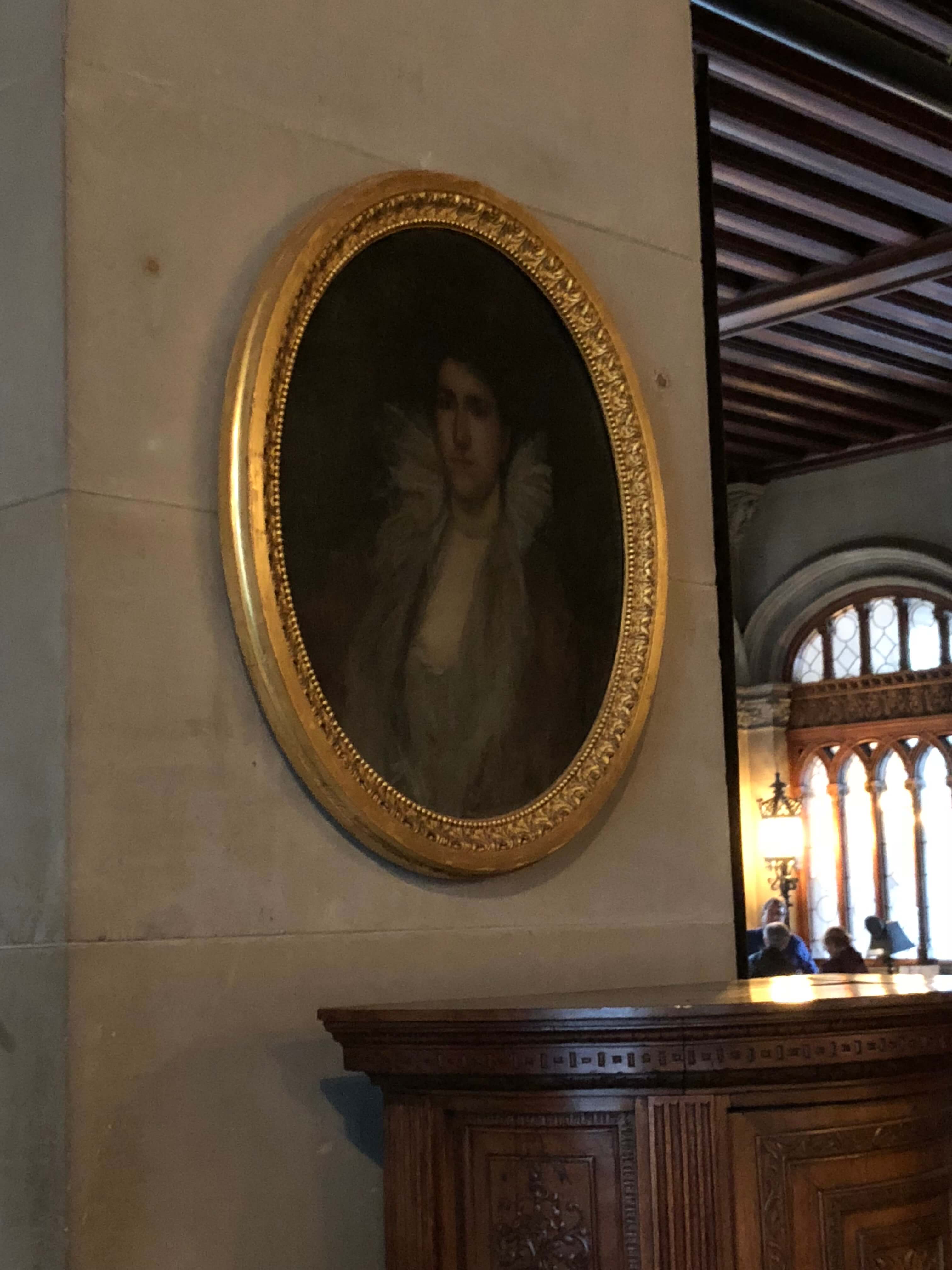
This painting by fashionable Swedish artist Anders Zorn hangs in the second floor living hall. It shows a dance, but a docent told me that it was actually painted to celebrate electricity. I guess that the invention of electric lights is how these couples could keep dancing all night long. It’s a really pretty painting.
